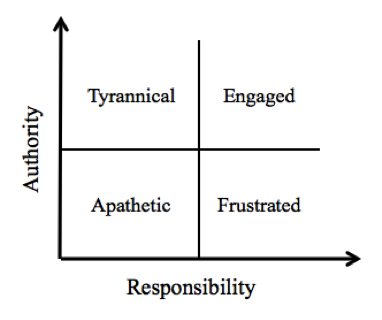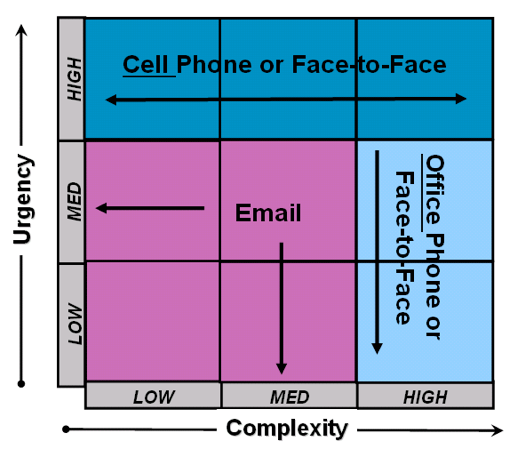Classic Lean Techniques Worked Wonders at a New York City Government Office Originally published Wednesday, September 05, 2007, IndustryWeek
Over two months starting in March, the staff at a bureau within a large NYC municipal agency was taught how to apply lean manufacturing principles to their work. They did not make value stream maps, nor did my company try to change the system in which people worked. Rather, the focus was on improving the personal work habits of each person so that they could be as efficient as possible irrespective of the overall business process.
At the time of our continuous improvement efforts, the staff at the bureau was struggling. Mayor Bloomberg and his no-nonsense Commissioner had raised expectations for responsiveness. At the same time, unwieldy bureaucratic processes and systems slowed people down. Chronic interruptions undermined people's ability to focus on their work. And no one had an effective approach to managing the increasing burden of email. As a result, work piled up and deadlines slipped. People were overwhelmed and felt as though they had no control over their jobs.
The Discipline Of 5S
We began with rigorous application of 5S principles to each person's workspace. Just like manufacturing workers, knowledge workers need to keep their workspaces clean and organized in order to perform efficiently. This means more than just cramming papers in a filing cabinet and shoving the stapler (along with along with broken pencils, dry highlighters, disposable chopsticks and soy sauce packets) in the top drawer. They had been doing that already, and found that they were buried in an avalanche of low-value or zero-value detritus.
Instead we segregated their information into three categories -- working, reference and archive -- and culled the obsolete garbage. This structure enabled them to reduce the time wasted in looking for their work and gave them more time to actually produce value. More importantly, the staff's rigorous assessment of the information they managed enabled them to identify the activities that were just waste.
The result? A 36% reduction in time spent looking for information, and a 95% reduction in the number of emails rotting in inboxes.
Why was the trimming of the email inboxes important? When inboxes are gorged with junk like Las Vegas-era Elvis, the terrible "signal to noise" ratio makes it difficult to identify and respond to what's truly important. Moreover, each email contains information and ideas that are part of the value streams that flow through the staff. When that information gets stuck in someone's inbox -- when the value stream stops flowing -- you're looking at nothing more than another form of excess inventory.
Keeping The Value Stream Flowing
In a manufacturing environment, the assembly line keeps the work-in-process moving at a pre-determined pace. People must handle the work as it comes to them, or the line stops. But the office environment is different. There's no visible production line, and that fosters sloppy work habits.
At this bureau, receiving, processing, storing, distributing, and tracking the information that comprise each person's job is a formidable challenge. (It is the government, after all. Even under Michael Bloomberg.) Unfortunately, most knowledge workers are undisciplined in executing these tasks. They feebly push papers from one side of the desk to the other. They shuffle piles. They read emails, mark them as unread, and take no action. They start working on one thing, lose focus, and move onto something else, resulting in piles of half-completed tasks. The value stream stops flowing. As a result, deadlines slipped and coworkers waited idly for information. Muda flooded the system.
So we refocused people's efforts on keeping the value stream moving. Staff learned to deal with the work that entered their systems -- an email, a phone call, a memo, a project, -- by taking one of four courses of action: doing it, delegating it, designating time to address it, or dumping it. These are the "4Ds." When workers rigorously applied the 4Ds, nothing returned to the inbox; value always moved forward.
The staff's new work habits led to a 40% reduction in the amount of time spent working on backlog (which is a form of excess inventory in a lean system), and a 25% reduction in time spent processing emails.
Smoothing The Flow
As in any modern organization, no one at this bureau works independently. Meetings abound, multi-tasking is rampant, and frequent interruptions make it difficult for anyone to focus on their high value activities. As a result of these interruptions, value didn't flow smoothly: people forgot critical tasks and commitments, and generally felt overwhelmed and out of control. Imagine a worker on an assembly line being pulled away from his station every 11 minutes to join a meeting or answer a question: workers would feel stressed, the line would grind to a halt, and the defect rate would skyrocket.
We countered these problems by implementing individual work habits that smoothed the flow of the value stream. Staff cut down needless interruptions (i.e., interruptions about non-urgent issues) with "meeting corridors" -- times that each employee was available for meetings or conversation. They scheduled and blocked out their own value work so that they could focus on those tasks. They established sustainable "service level agreements" for email responses, rather than supporting the expectation of instant response. And they cut down on the amount of multi-tasking in favor of "single tasking," creating the understanding that doing one task at a time is actually a faster and more efficient way of doing one's job.
These changes resulted in a 35% reduction of time lost to interruptions, and a 35% decrease in overtime -- indicating that people were getting more done in less time.
It's Not Just About The Handoffs
Most lean office initiatives are concerned exclusively with making value stream maps and creating a more efficient business process. But that's only part of the solution to reducing muda. No matter how lean the system, if the people who work within it are inefficient, you'll still have waste. It's like a relay race: you can make the baton handoffs clean, fast, and efficient, but if the runners are slow, they're going to lose.
That's where lean work habits come into play. These habits ensure that people are running fast - that when they're reconciling the budget, or planning a conference or creating a marketing plan for a new product, they're working as efficiently as possible.
Journalist Charles Fishman points out that a typical Toyota assembly line in the United States makes thousands of operational changes in the course of a single year. He comments, "that number is not just large, it's arresting, it's mind-boggling. How much have you changed your work routine in the past decade?"
Remember, lean is not just about the system. It's about the people. And isn't it time that you addressed how they -- and you -- work?




 Download PDF
Download PDF
